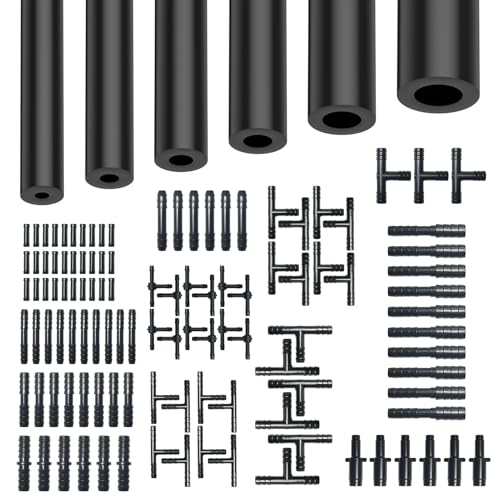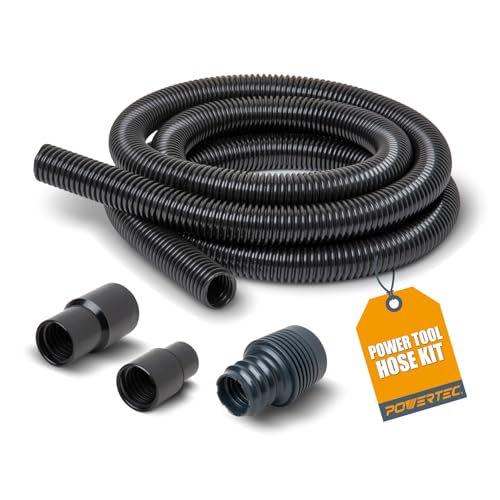Vacuums are one of the most significant inventions of modern times. Not only have they made cleaning faster but also stress-free. One can have their house clean faster and with less effort. So, what does one do when the hose develops problems?
You scour the internet for vacuum hose repair methods and hope they will work. But do they? The ways we have here do work. In addition to that, they are also relatively straightforward to apply.
Read on and see for yourself.
Contents
What Commonly Causes Vacuum Hose Issues?
There are several causes of vacuum hose issues. It could be a leak or that the hose doesn’t pick up dirt the way you want it. It could also be a hole in the vacuum hose that impairs the vacuum’s proper functioning.
If you have a clogged vacuum hose, then the chances are that the vacuum won’t work the easy you want it to. The leading cause of vacuum hose issues is most likely blockage by dirt and other debris.
If the dirt becomes too much, it might even lead to holes in the vacuum’s hose. When dirt rots inside the hose, apart from making it rot, it might create holes and cracks. The holes will be responsible for leaks as well as other malfunctions.
Therefore, in a nutshell, most vacuum hose issues are a result of dirt blocking the hose. So how do you go about vacuum repair issues? What are the proven and tested ways to fix these issues before they make your vacuum inoperable?
How to Repair Vacuum Hose – Techniques & Methods

What you Will Need
- A coated wire
- Duct Tape
- A Knife
- Chalk Powder
- Broom handle
Repairing the vacuum hose is quite a complicated affair and will therefore require you to take your time. There are two main vacuum hose repair issues: vacuum leaks and clogging.
Clogging is a result of too much dirt blocking the path inside the hose. Leaks are due to cracks and holes in the vacuum hose. They both are relatively straightforward to fix.
- Good Value and Versatile: 3-pack of heavy duty duct tape with…
- Adheres to Various Surfaces: Bonds securely to surfaces such as…
- Waterproof: Features a waterproof backing suitable for both…
Last update on 2025-11-27 / Affiliate links / Images from Amazon Product Advertising API
How to Fix a Leaking Vacuum Hose
The vacuum hose picks up all kinds of dirt. Over time this dirt will not only clog the hose but might also cause cracks and holes.
To solve this, you will need to know where the leak is originating from. Most times, it will arise from the connector. If that is the case, remove the hose from the connector, then use the knife to cut away the hose’s head where it connects with the vacuum.
Now reconnect it to the vacuum.
If the cracks or holes are on any other part of the hose, you will need to use the broom handle to stretch out the hose to find the source of the leak.
Pushing the broom handle through the hose will have the hose at full stretch and expose the area with the crack or hole. Once you have identified that area apply some powder onto the site to ensure the duct tape holds when you fasten it.
The crack or hole will most times have either dirt or even grease that might reduce the duct tape’s effectiveness. After that, use duct tape to seal off any cracks or holes. That will prevent any further leakages.
Now that duct tape might have covered the crack or hole, the inside part is still sticky and might cause a clog. That is why you will need to pour in some powder that will go and stick to this sticky part and prevent dirt from sticking there.
Read Also: How to Clean Shark Vacuum Hose
How to Fix a Clogged Vacuum Hose

A clogged vacuum hose can be a considerable nuisance whenever you are using the vacuum. Not only will it slow you down, but it will also make the cleaning process unnecessarily longer.
So, how do you fix it? This shouldn’t be hard to repair. All you will need is the broom handle and a coated wire.
Step 1
Push in the coated wire to remove the dirt that is clogging the hose. Do this repeatedly until you are sure you have removed most of the dirt.
Step2
Push the broom handle through the hose to push out any dirt that might be remaining and stretch out the hose.
Step 3
Once you do that, pour some hot water through the hose. While doing this, ensure you have disconnected it from the vacuum. Vinegar is also a good option for this step.
- UNMATCHED PURITY AND CONSISTENCY: Experience the difference with…
- POWER AT YOUR COMMAND: Dilute 1:12.5 with water. One gallon of…
- SOURCED AND MADE IN THE USA: We take great pride in sourcing and…
Last update on 2025-11-26 / Affiliate links / Images from Amazon Product Advertising API
And that’s it. You will have unclogged your vacuum hose and have it working smoothly again.
Here we suggest some useful vacuum hose repair kits from Amazon. You can check this out here
Last update on 2025-11-16 / Affiliate links / Images from Amazon Product Advertising API
Important Points to Remember
- Sometimes you might find that your hose has so many cracks and holes that duct tape and any other adhesive wouldn’t easily fix. In that case, you will have no other option but to get a new hose for your vacuum.
- You will need a mask and gloves to help you avoid the fumes originating from the hose while you repair it.
We also suggest some new hose from Amazon, check the list :
Last update on 2025-11-21 / Affiliate links / Images from Amazon Product Advertising API
Final Thoughts
If you were looking for some tried and tested vacuum hose repair techniques, our tips should help you quickly fix vacuum hose issues. Do try them and see how handy they will be.
Good luck.
Relevant Resources:
- Top 9 Best Vacuum For Luxury Vinyl Plank Floors
- 11 Best Vacuum for Concrete Floors
- Best Vacuums Without Beater Bar
- Top 7 Best Vacuum For House Cleaning Business
- 7 Best Vacuum With Retractable Cord
- Top 11 Best Lightweight Vacuum Cleaner for Elderly
- Top 5 Best Central Vacuum System for Pet Hair
- Top 9 Best Vacuum for Fleas Reviews & Buying Guides
- 5 Best Walk Behind Leaf Vacuum Mulcher
- Top 7 Best Commercial Leaf Vacuum Reviews
- 7 Best Cordless Backpack Vacuum Cleaner
- Top 7 Best Garage Vacuum Wall Mounted
- Top 5 Best Shop Vac for Drywall Dust












